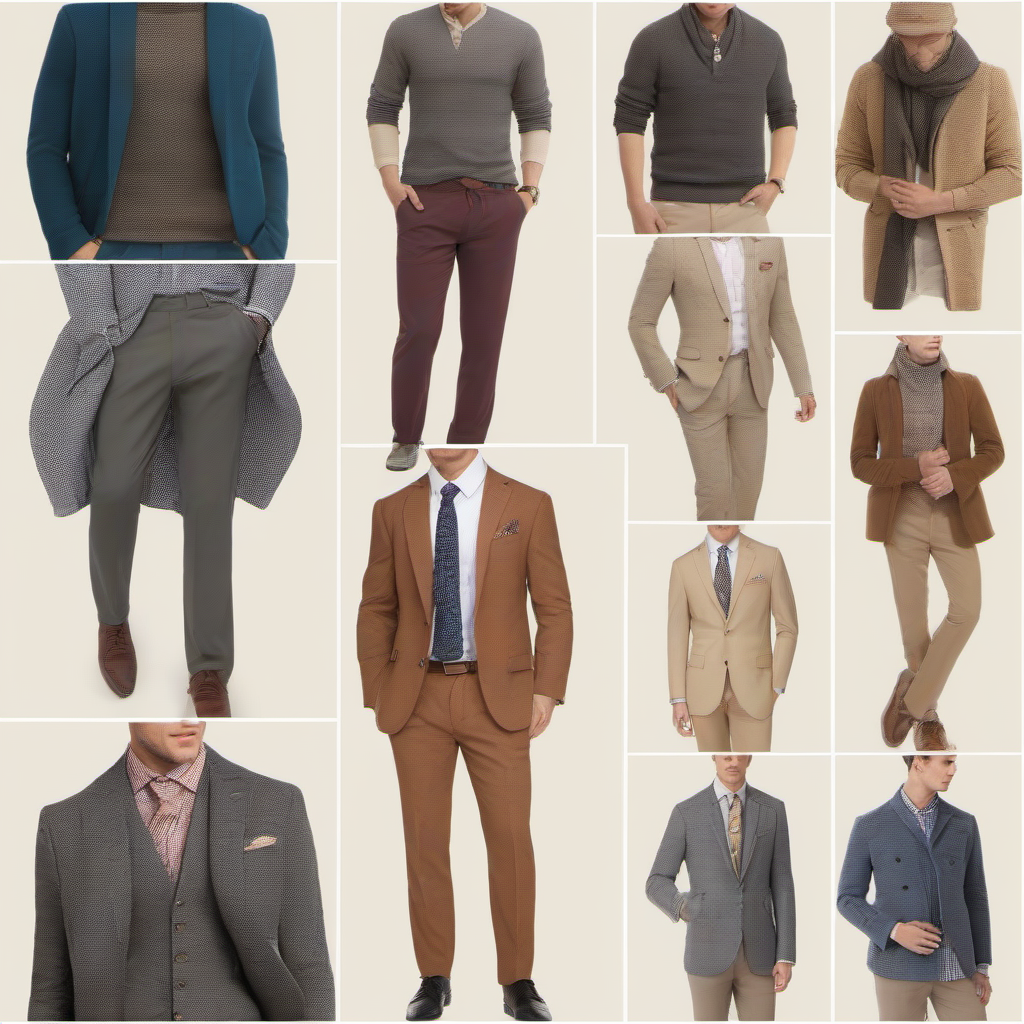Understanding the essentials of men’s clothing can enhance your shopping experience and help you build a versatile wardrobe. From fabric choices to outfit ideas, this guide covers everything you need to know.
Understanding Men’s Clothing Fabrics
When shopping for men’s clothing, the fabric is one of the most important factors to consider. Common fabrics include cotton, wool, and polyester, each with its own unique properties.
- Cotton: Known for its breathability and softness, cotton is a popular choice for casual wear. However, it can wrinkle easily and may require more frequent washing. For example, a classic cotton button-down shirt is perfect for a relaxed weekend outing.
- Wool: This durable fabric provides excellent insulation, making it ideal for colder weather. On the downside, wool can be itchy for some and may require special care when washing. A wool blazer, for instance, can elevate your winter wardrobe significantly.
- Polyester: A synthetic fabric that resists wrinkles and shrinking. While it is durable, it may not be as breathable as natural fibers, leading to discomfort in hot weather. Polyester blends are often used in dress shirts for their easy-care qualities.
Each fabric has its advantages and disadvantages, so consider your lifestyle and preferences when making a choice.
Key Characteristics of Popular Men’s Clothing Items
Understanding the characteristics of essential clothing items can help you make better purchasing decisions. Here are some key features to consider:
- Shirts: Look for details like collar styles, sleeve lengths, and fabric types. A well-fitted shirt can elevate your look significantly. For instance, a slim-fit dress shirt can create a polished appearance for a job interview.
- Pants: Pay attention to the rise (waist to crotch), fit (slim, regular, relaxed), and fabric. The right pair of pants can enhance your silhouette. Chinos, for example, offer a versatile option that can be dressed up or down.
- Jackets: Consider the cut (tailored vs. relaxed) and material. A good jacket can provide structure to your outfit and keep you warm. A tailored blazer can transform a simple t-shirt and jeans into a smart-casual ensemble.
The fit and style of each item play a crucial role in your overall appearance, so choose wisely based on your body type and personal style.
Size Guide: Finding the Perfect Fit
Finding the right size is essential for comfort and style. Here are some tips to help you navigate sizing:
- Accurate Measurements: Use a measuring tape to get your chest, waist, and inseam measurements. This will help you select the right size from the size guide. For example, if your chest measures 40 inches, you might be a size medium or large, depending on the brand.
- Size Charts: Always refer to the brand’s size chart, as sizing can vary between manufacturers. Don’t hesitate to consult customer service if you’re unsure. For instance, a size 32 in one brand may not fit the same as a size 32 in another.
- Sizing Variations: Be aware that different styles (e.g., slim fit vs. regular fit) may require you to size up or down. Trying items on is always a good idea when possible. If you typically wear a large but are trying a slim-fit shirt, you might need an extra-large for comfort.
Outfit Ideas for Every Occasion
Creating versatile outfits is key to maximizing your wardrobe. Here are some outfit ideas for different occasions:
- Casual: Pair a cotton t-shirt with denim jeans and sneakers for a relaxed look. This is perfect for a weekend brunch with friends.
- Business Casual: Combine a button-up shirt with chinos and loafers for a smart yet comfortable outfit. This is suitable for a casual Friday at the office.
- Formal: A wool suit with a crisp dress shirt and leather shoes is perfect for formal events, such as weddings or business meetings.
- Weekend Outing: Layer a lightweight jacket over a graphic tee with joggers and casual shoes for a laid-back vibe, ideal for a day at the park.
- Layering: Use a cardigan over a collared shirt paired with dark jeans for a stylish layered look, great for transitional weather.
- Outdoor Activities: Opt for moisture-wicking fabrics with cargo shorts and hiking shoes for comfort and practicality during outdoor adventures.
Matching Men’s Clothing: Tips and Tricks
To create a cohesive look, consider these matching tips:
- Color Coordination: Stick to a color palette that complements your skin tone. Neutral colors can be paired with bolder shades for a balanced look. For example, a navy blazer can be paired with a white shirt and khaki pants for a classic combination.
- Pattern Mixing: Don’t be afraid to mix patterns, but keep them in the same color family to avoid clashing. A striped shirt can work well with a plaid blazer if the colors are complementary.
- Accessorizing: Use belts, watches, or hats to elevate your outfit without overwhelming it. A simple accessory can make a big difference. A leather watch can add sophistication to a casual outfit.
Frequently Asked Questions
Q: How do I know what size to order when shopping online?
A: Always refer to the brand’s size guide and take your measurements before ordering.
Q: What fabric is best for summer clothing?
A: Lightweight and breathable fabrics like cotton and linen are ideal for summer.
Q: Can I mix patterns in my outfit?
A: Yes, but stick to patterns in the same color family to maintain a cohesive look.
Q: What are some must-have items for a men’s wardrobe?
A: Essential items include a well-fitted blazer, versatile jeans, a classic white shirt, and comfortable shoes.
